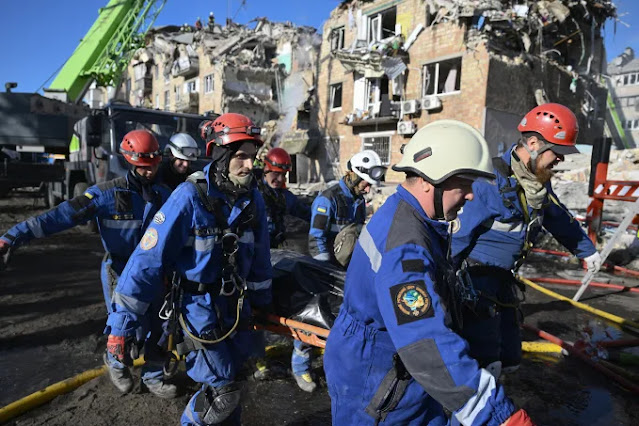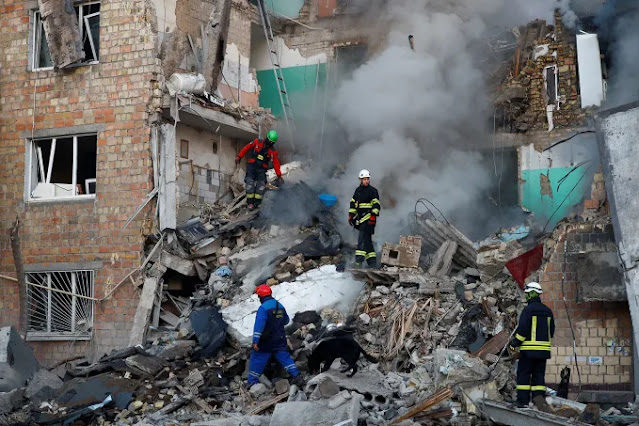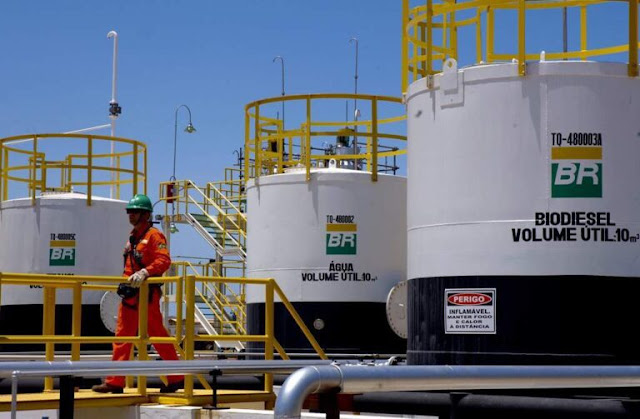In a chilling escalation of the ongoing war between Russia and Ukraine, Russia launched its second-largest air assault since the full-scale invasion began in February 2022, targeting the Ukrainian capital, Kyiv, and other regions with unprecedented ferocity. The attack, which occurred overnight, resulted in the tragic loss of at least 18 lives, including four children, and caused extensive damage to critical infrastructure, including diplomatic buildings. Ukrainian authorities reported that the barrage involved 629 aerial weapons—598 drones and 31 missiles—unleashed in a coordinated assault that struck civilian and diplomatic targets alike. Among the damaged structures were a building housing the European Union mission and another belonging to the British Council, prompting swift diplomatic responses from both the EU and the UK. As rescue operations continue and Kyiv declares a day of mourning, the attack has reignited global calls for action against Russia’s aggression. This article examines the details of the assault, its immediate aftermath, and its broader implications for the war and international relations.
The Scale of the Attack
The overnight assault marked one of the most intense bombardments of the war, surpassed only by a single previous attack in terms of scale. Ukrainian authorities reported that Russia deployed a staggering 629 aerial weapons, including 598 drones and 31 missiles, in a “combined attack from multiple directions.” The use of such a large number of drones and missiles underscores Russia’s intent to overwhelm Ukraine’s air defenses and inflict maximum damage on both civilian and strategic targets. The barrage targeted Kyiv, the political and cultural heart of Ukraine, as well as other regions, leaving a trail of destruction in its wake.
The human toll was devastating. At least 18 people were killed, including four children, whose lives were cut short in what Ukrainian President Volodymyr Zelensky described as a “horrific and deliberate killing of civilians.” The targeting of residential areas, including apartment buildings and a kindergarten, has fueled accusations that Russia is intentionally terrorizing Ukraine’s civilian population. In addition to the loss of life, dozens of people were injured, and the full extent of the casualties is still being assessed as rescue operations continue.
The physical damage was equally staggering. In Kyiv, the assault left a kindergarten in ruins, damaged residential buildings, and destroyed dozens of cars. Transport infrastructure, critical to the city’s functionality, was also hit, disrupting daily life and complicating recovery efforts. The attack’s precision and scale suggest a deliberate strategy to destabilize the capital and undermine Ukraine’s resilience. Most notably, the strikes damaged a building housing the European Union mission and another belonging to the British Council, both significant diplomatic targets. These attacks on foreign-affiliated structures have heightened international outrage and drawn sharp rebukes from Western leaders.
Diplomatic Fallout
The targeting of buildings associated with the European Union and the British Council marked a significant escalation in Russia’s tactics, as it directly implicated foreign entities in the conflict. The European Union and the United Kingdom responded swiftly, summoning top Russian diplomats to address the attacks. European Commission President Ursula von der Leyen condemned the strikes, stating that they demonstrated Moscow’s willingness to “terrorize Ukraine” and its disregard for international norms. In her remarks, von der Leyen called for Russian President Vladimir Putin to return to peace negotiations, emphasizing that the international community would not stand idly by in the face of such aggression.
The UK, similarly, expressed outrage over the damage to the British Council building, which serves as a cultural and educational hub in Kyiv. The attack on diplomatic infrastructure is seen as a provocative move, potentially aimed at testing the resolve of Ukraine’s Western allies. By striking buildings associated with the EU and the UK, Russia may be signaling its defiance of international pressure and its willingness to escalate the conflict further. These actions have raised concerns about the safety of foreign missions in Ukraine and the potential for broader diplomatic repercussions.
The international response has not been limited to the EU and the UK. Ukrainian President Zelensky used the attack to renew his calls for stronger global condemnation of Russia’s actions. In a statement posted on social media, he described the assault as a deliberate attempt to kill civilians and urged world leaders to take decisive action. “This horrific and deliberate killing of civilians cannot go unanswered,” Zelensky wrote. “The world must unite to stop Russia’s aggression and hold those responsible accountable.” His plea reflects the growing frustration among Ukrainian leaders, who have repeatedly called for increased military and financial support from the West to counter Russia’s relentless attacks.
The Human and Material Cost
The immediate aftermath of the attack saw an all-out mobilization of emergency services in Kyiv. More than 500 emergency workers and 1,000 police officers were deployed to multiple sites across the city, working tirelessly to rescue survivors, clear debris, and provide medical assistance to the injured. The scale of the destruction has made these efforts particularly challenging, with collapsed buildings and damaged infrastructure complicating access to affected areas. Images from the scene show shattered windows, smoldering wreckage, and distraught residents searching for loved ones amidst the chaos.
Among the most heartbreaking losses were the four children killed in the attack. Their deaths have become a rallying cry for Ukrainians, who see the targeting of civilians as evidence of Russia’s disregard for human life. The destruction of a kindergarten, a place meant to nurture and protect young children, has further amplified these sentiments. Social media platforms, particularly X, have been flooded with messages of grief and anger, with many Ukrainians and their supporters calling for justice.
The damage to residential buildings has also left countless families displaced. With winter approaching, the destruction of homes and infrastructure poses significant challenges for Kyiv’s residents, many of whom have already endured years of hardship due to the war. The attack on transport infrastructure, including roads and public transit systems, has further disrupted daily life, making it difficult for residents to access essential services or flee to safer areas.
The assault’s impact on diplomatic buildings, while symbolically significant, also has practical implications. The EU mission and the British Council play important roles in supporting Ukraine’s integration with the West and promoting cultural and educational exchanges. Damage to these facilities could hinder their operations, further isolating Ukraine at a time when international support is critical. The attacks have also raised questions about the safety of foreign diplomats and staff in Kyiv, prompting discussions about enhanced security measures for diplomatic missions.
Kyiv’s Response: A Day of Mourning
In response to the tragedy, Ukrainian authorities declared Friday, August 29, 2025, a day of mourning in Kyiv. Flags across the city were lowered to half-mast, and all entertainment events were canceled as a mark of respect for the victims. The declaration of a day of mourning reflects the profound impact of the attack on the Ukrainian capital, where residents have grown accustomed to the sounds of air raid sirens but remain shaken by the scale of the latest assault.
The day of mourning also serves as a moment of reflection for a nation that has endured more than three years of war. For many Ukrainians, the attack is a stark reminder of the ongoing threat posed by Russia and the urgent need for international support. Public gatherings and vigils are expected across Kyiv, with residents coming together to honor the memory of those lost and to reaffirm their commitment to resisting Russian aggression.
The Broader Context of the War
The latest assault comes at a critical juncture in the Russia-Ukraine war, which has entered its fourth year with no clear resolution in sight. Russia’s full-scale invasion, launched in February 2022, has caused widespread devastation across Ukraine, displacing millions of people and claiming tens of thousands of lives. Despite early setbacks, Russia has continued to press its offensive, targeting both military and civilian infrastructure in an apparent effort to break Ukraine’s resolve.
Kyiv, as the capital and a symbol of Ukrainian sovereignty, has been a focal point of Russian attacks throughout the war. The city has faced repeated bombardments, including missile and drone strikes, but the latest assault stands out for its scale and intensity. The use of 598 drones, in particular, highlights Russia’s growing reliance on unmanned aerial vehicles, which are cheaper and more difficult to intercept than traditional missiles. This shift in tactics has placed additional strain on Ukraine’s air defense systems, which have been bolstered by Western aid but remain stretched thin.
The attack also underscores the challenges facing Ukraine’s allies. The United States, the European Union, and other Western nations have provided billions of dollars in military and humanitarian aid to Ukraine, including advanced air defense systems and weapons. However, the sheer volume of Russia’s attacks has raised questions about the sustainability of this support and the need for more robust measures to counter Russian aggression. Zelensky and other Ukrainian leaders have repeatedly called for additional air defense systems, long-range missiles, and fighter jets to help protect the country’s skies and push back Russian forces.
International Implications
The targeting of diplomatic buildings has elevated the attack to a matter of global concern. The damage to the EU mission and the British Council is likely to be seen as a direct challenge to the international community, which has sought to isolate Russia through sanctions and diplomatic measures. The summoning of Russian diplomats by the EU and the UK is a first step, but there is growing pressure for more concrete actions, such as increased sanctions or military support for Ukraine.
The attack also raises questions about the future of peace negotiations. While von der Leyen and other Western leaders have called for Putin to return to the negotiating table, Russia’s actions suggest little willingness to engage in meaningful dialogue. The deliberate targeting of civilians and diplomatic infrastructure indicates that Moscow is doubling down on its strategy of intimidation, hoping to force Ukraine into submission.
For Ukraine, the attack is a reminder of the stakes in the ongoing war. The country’s leaders have made it clear that they will not capitulate to Russian aggression, but the mounting toll on civilians and infrastructure is taking a heavy toll. The resilience of the Ukrainian people, demonstrated through their response to countless attacks, remains a source of strength, but it is increasingly clear that international support will be critical to sustaining their fight.
The Path Forward
As rescue operations continue in Kyiv, the focus is shifting to recovery and rebuilding. The Ukrainian government, with support from international partners, will need to address the immediate needs of those affected by the attack, including providing shelter, medical care, and psychological support for survivors. The reconstruction of damaged infrastructure, particularly residential buildings and transport networks, will be a long-term challenge, requiring significant resources and coordination.
At the same time, the international community faces a critical decision point. The attack on Kyiv, and the targeting of diplomatic buildings, has underscored the urgency of addressing Russia’s aggression. Calls for increased military aid, tighter sanctions, and stronger diplomatic measures are likely to grow in the coming days. The EU, the UK, and other allies will need to balance their support for Ukraine with the risks of further escalation, a delicate task in an already volatile conflict.
For now, Kyiv mourns its losses and braces for the possibility of further attacks. The resilience of the Ukrainian people, forged through years of war, will be tested once again. But as the nation comes together to honor the victims of Russia’s latest assault, it is clear that the fight for Ukraine’s sovereignty and survival is far from over. The international community’s response in the days and weeks ahead will play a crucial role in shaping the next chapter of this devastating conflict.
Conclusion
Russia’s second-largest air assault on Ukraine, launched on August 29, 2025, has left a trail of destruction and grief in Kyiv, claiming the lives of 18 people, including four children, and damaging critical infrastructure, including diplomatic buildings. The attack, involving 629 aerial weapons, represents a significant escalation in Russia’s campaign against Ukraine, prompting outrage from Ukrainian leaders and their international allies. As Kyiv declares a day of mourning and rescue operations continue, the assault has reignited calls for stronger global action to counter Russia’s aggression. The targeting of civilian and diplomatic targets underscores the brutality of the ongoing war and the urgent need for a unified international response. For Ukraine, the path forward is fraught with challenges, but the resilience of its people and the support of its allies offer hope in the face of adversity.








